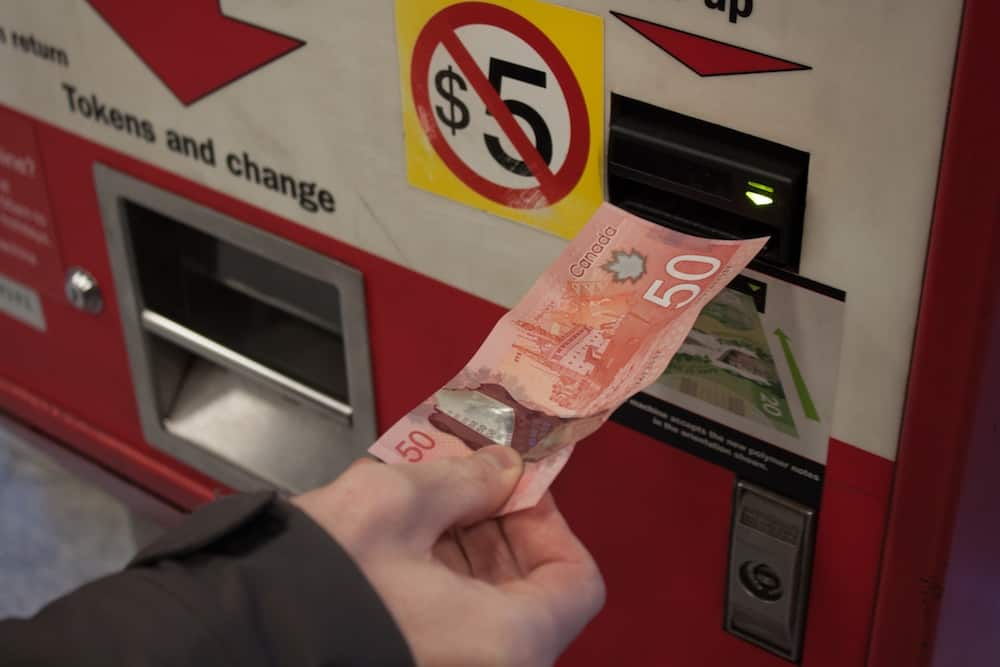As the board of the Toronto Transit Commission (TTC) recently approved an increase in fares, the high cost of post-secondary Metropasses is a hot topic yet again. Come January 1, the TTC will raise the price of transit tokens and passes. Monthly passes for Toronto’s post-secondary students, already among the most expensive in Canada, will now cost $108, up $2. Illustrating just how expensive the TTC is, a student in Vancouver could buy three months of their city’s passes for the cost of riding a month on the TTC. Vancouver’s transit system charges post-secondary students $35 for monthly passes; students in Montreal pay only $45. Most other Canadian cities also have significantly cheaper monthly transit passes for students, including Calgary ($57.50), St. John’s ($61.25), and London ($70).
Alastair Woods, president of the Ontario wing of the Canadian Federation of Students (CFS-O), is strongly in favour of lower fares: “One of the things we’re seeing is that transit, across the province, actually, is increasingly becoming more and more unaffordable,” he says. “We believe there should be substantial public investment to bring down that cost.” University of Toronto Students’ Union (UTSU) president Munib Sajjad echoed Woods’s views, stressing that “the financial burden of post-secondary education is not just about tuition fees. Students need to commute to campus as well.”
Three years ago, CFS-O, with the help of student unions, launched the Fair Student Fares campaign, which successfully pushed Toronto’s City Council to create a discounted Metropass for post-secondary students. Although the pass is 19 per cent cheaper than an adult Metropass, the reduction pales in comparison to those in Vancouver and Montreal, where student passes are 72 per cent and 42 per cent cheaper, respectively, than their adult counterparts.
The cost of Metropasses hits hard — four in five students at U of T’s St. George campus are commuters. Caitlin Morishita-Miki, of New College, takes the TTC to campus every day from Donlands station. The Metropass is the only option, she says, and without a better discount on post-secondary fares, she feels “backed into a corner.” For Morishita-Miki, like thousands of others, having to spend nearly $850 for eight months of Metropasses is a heavy burden.
Universities in Ottawa have an unusual model. All students at Carleton University and the University of Ottawa receive a monthly transit pass, called the U-Pass. The pass costs $46 a month, and is a mandatory addition to student fees. High rates of participation in the popular program allow it to include greater numbers of students, and it therefore provides more leverage in negotiating with transit authorities.
Despite being Canada’s busiest system, the TTC faces a unique funding challenge. With record ridership, the TTC will still have an operational shortfall of $6 million this year, even with the fare increase. The TTC is the least subsidized transit system in North America, receiving only $0.79 cents per rider from City Hall and nothing from the provincial or federal governments. The much smaller York Region Transit gets a whopping $4.49 per rider in subsidy. Transit systems in Vancouver and Montreal get subsidies of $1.62 and $1.16, respectively. Even New York City’s system receives $1.03 per passenger. Subsidies account for only 27 per cent of the TTC’s operating budget, with the rest collected at the fare box. Every other transit system in the Greater Toronto Area (GTA) gets more than half of its funding from government. In both Vancouver and Montreal, subsidies make up 46 per cent of operating budgets.
Ontario Ministry of Transportation spokesman Bob Nichols emphasizes the province’s efforts to lower student fares on GO Transit and build new transit infrastructure in the GTA. However, he stresses that the province “is not involved in the daily operations of municipal transit services. Municipalities are responsible for all aspects of their operations, including the setting of fares.” He does not mention whether the province plans to provide a direct operational subsidy.
Adding to the problem is the fact that students in the GTA often commute using different transit systems. While the TTC is the most popular, students also use the transit systems in Brampton, Mississauga, and York Region, as well as GO Transit. Meanwhile, students in Vancouver, Montreal and Ottawa generally use a single transit system, making the process of negotiating discounts much easier.
With an eye toward further enhancing the affordability of transit, CFS-O recently launched a survey, titled “Students for Greater Transit Access,” to determine its next move. Woods calls the survey a “fact-finding mission,” gauging students’ views on the state of transit and expects that “a big piece of that will be talking about affordability issues.” The UTSU is also pursuing what Sajjad calls a “network of discounts” for students commuting from elsewhere in the GTA. While the UTSU is negotiating with provincial transportation authority Metrolinx about the possibility of a larger U-Pass covering all of Southern Ontario, a pass only for the TTC is not on the agenda.
As students expect to pay even more for transit, affordability remains a problem for many of U of T’s commuters, lacking a cohesive solution.


